Penang's historic George Town: A heritage theme park?
Tourists flock to the UNESCO world heritage site of George Town in Penang to take pictures with its street art murals. But local activists warn that uncontrolled tourist numbers could be a threat to the city’s built and cultural heritage.
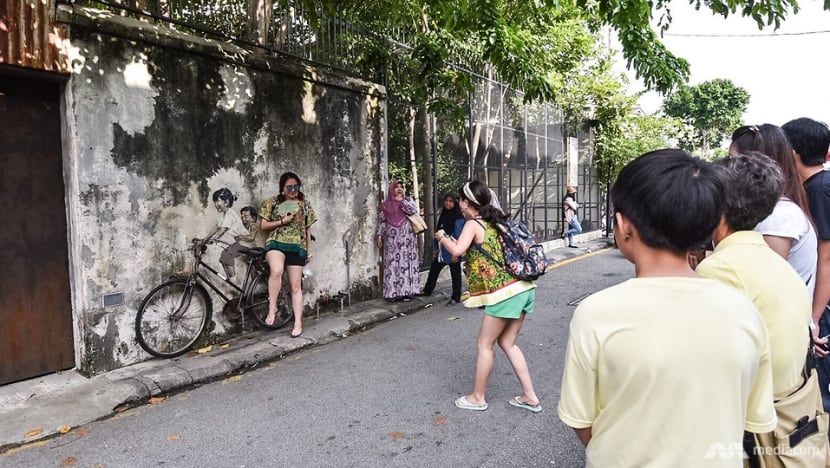
Tourists line up to take pictures with a street art mural along George Town's Armenian Street. (Photo: Lianne Chia)
GEORGE TOWN: It is early evening on a Friday in December and the streets of George Town are teeming with visitors.
A stream of tourists line up to take pictures with a street art mural. A busker plays a violin outside a café, while two girls in floral dresses and sunhats walk past, iced coffee in hand. Families on bicycles jostle for space on the narrow roads jammed with motorcycles and cars, while trishawmen call out to passing tourists.
Tourists flock to Penang to walk the streets of the historic city of George Town, which was named a UNESCO world heritage site in 2008. But as more businesses open to cater to the tourists, activists warn that the city’s heritage – both built and cultural – could be in danger.
Activist group George Town Heritage Action (GTHA) says many of the city’s long-time residents are being forced to move out of their homes when the shophouses they rent are sold to new owners. These pre-war shophouses, GTHA added, often become converted into cafes, boutique hotels, and souvenir shops.
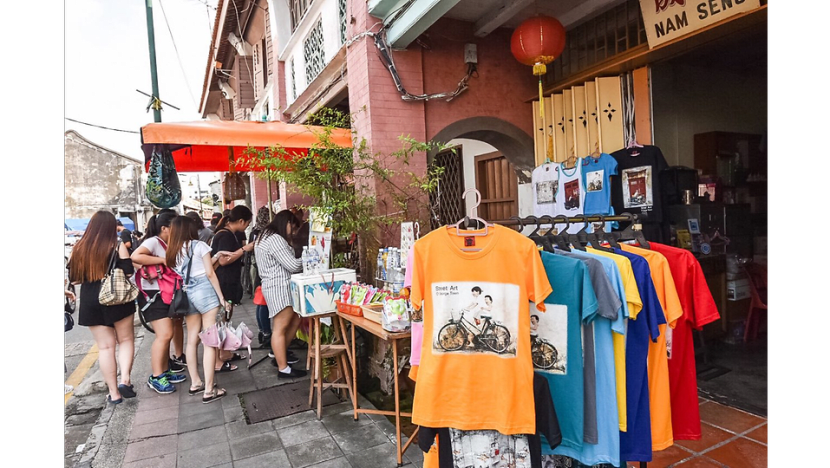
Businesses catering to the tourists have become an increasingly common sight in George Town. (Photo: Lianne Chia)
“I’ve been guiding for 25 years now, and I can see the difference,” said Joann Khaw, GTHA’s co-founder and a UNESCO cultural heritage specialist guide. “In what used to be a residential street, 10 shophouses used to be residences, and now nine are cafes and hotels.”
“When the tenants leave, they usually leave the city,” she added. “So we lose the living culture … the traditional trades like rattan weaving and Chinese stamp-making, festivals, celebrations and religious practices.
“We may have the physical buildings, but we lose the tenants and their culture. Instead we have the trinket shops, cafes and hotels, and to me, that’s not a real city.”
A HERITAGE THEME PARK?
Mdm Chee Hooi Kheng, 76, has lived in her pre-war shophouse for 55 years. She started out running a laundry business, but for the past 15 years has been spending her time taking care of her grandchildren.
As time passed, the sound of development grew louder in her street: Motorbike engines, car horns and more recently, the booms and bangs of construction as her neighbours in the row of shophouses across the street moved out.
“It used to be other businesses like mine, but they’ve all been sold off and turned into a hotel,” she said. “My neighbours have left the city and moved back to Tangshan.”
Thousands of residences have been lost in this way, according to GTHA’s co-founder Mark Lay. He explained that city council approval is required to convert these shophouses from residential to commercial use, but there is “zero enforcement”.
To make matters worse, he added, when these shophouses are renovated, developers keep the facade of the shophouses, but modernise and tear down the inside.
“It seems like the state just wants to milk this town for as much as they can, bring in tourists and turn this place into a heritage theme park,” said the New Zealander, who grew up in Singapore. “It’s like Jonker Street in Malacca, or Chinatown in Singapore, where you walk down and it’s all fridge magnets and other junk all for the tourists.”
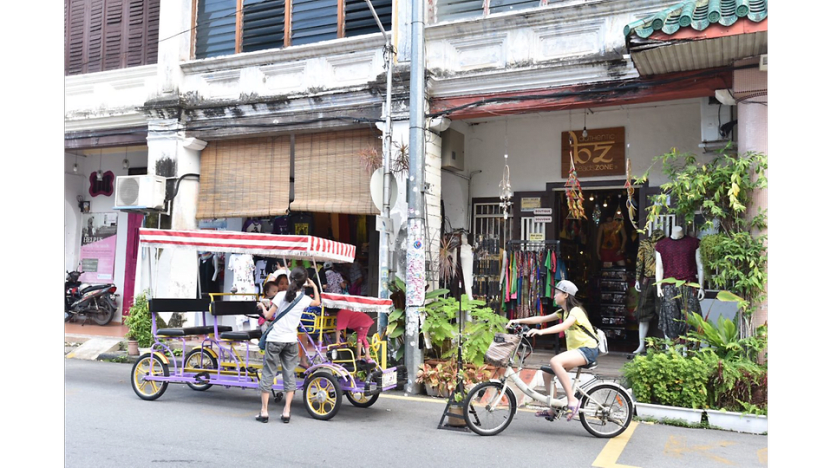
Tourists on pedal bikes jostle for space with motorbikes, cars and trishaws on George Town's narrow streets. (Photo: Lianne Chia)
Coming on the back of this issue is the Penang state government’s plan to build a transport hub on Sia Boey, a heritage site just outside the heritage zone. Chief Minister Lim Guan Eng had said in a press conference earlier this year that Sia Boey had been identified as the best spot for a planned Light Rail Transit and Mass Rail Transit interchange under the Penang Transport Master Plan, according to a Bernama report.
A recent archaeological dig at the site also uncovered artifacts and ceramics that “could be historically significant”, said GTHA, adding that while a full report on the artifacts was due to be released in November, “nobody knows what’s in that report”.
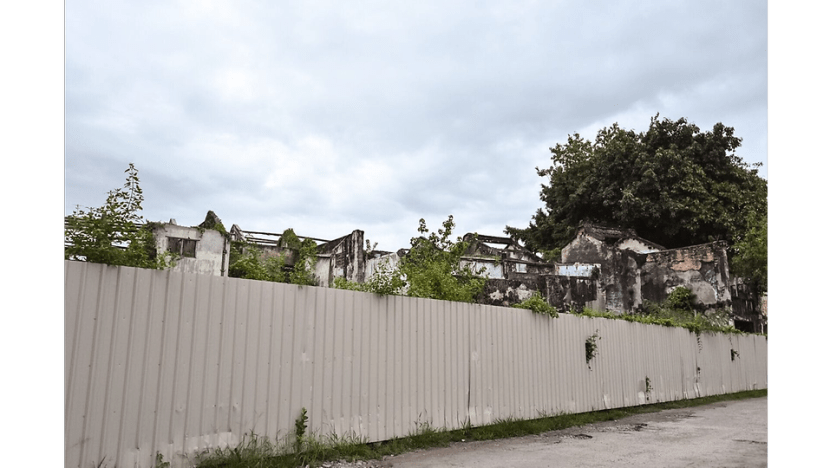
The site of the Sia Boey old market has been earmarked for a transport hub. (Photo: Lianne Chia)
“Sia Boey is sitting on layers and layers of history,” said Ms Khaw. “The Prangin Canal was there, and we had boats coming up that way. We’ll lose all that if the transport hub goes ahead.”
When approached by Channel NewsAsia, Penang state heritage agency George Town World Heritage Incorporated (GTWHI) said the Sia Boey issue is an ongoing one. “What I know is at the moment, the site won’t be touched as work there has stopped,” said GTWHI’s built environment and monitoring manager Muhammad Hijas Sahari. “But we have mentioned that if they want to do any more work or development, they will need to submit a heritage impact assessment before we can provide our feedback.”
NEXT STEPS
Mr Hijas acknowledged that the displacement of long-time residents in the heritage zone can be an issue. “It becomes a situation where there’s a willing buyer and willing seller between the developers and shophouse owners, and often the tenants don’t find out about it until the deal is done and they are told to move out,” he said. “This is an issue that we can’t control.”
But he added that there are also situations where some of the tenants are willing to make the move. “Previously, it was one family to one room in a shophouse, but now people want a more comfortable life, and as they get more money, some will move out by choice.”
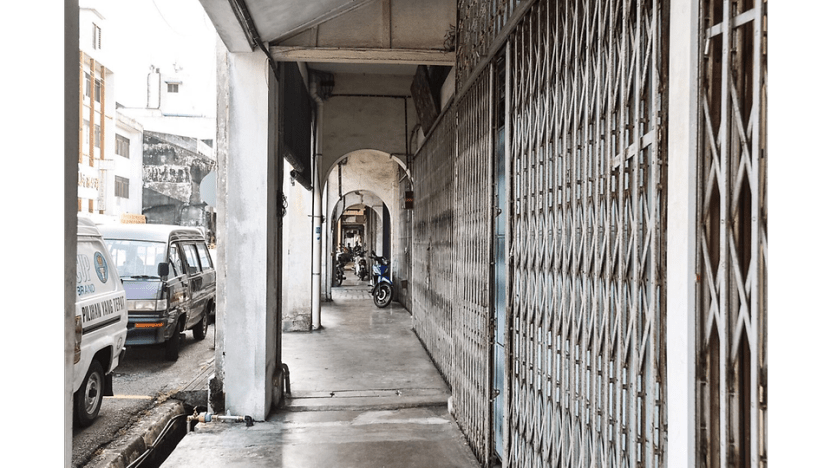
A row of empty shophouses in George Town. (Photo: Lianne Chia)
Nonetheless, GTWHI is taking steps to help displaced tenants. Mr Hijas explained that tenants facing this issue can apply to them, and they will find an alternative site to place them. Some traditional trades will also be placed in conserved shophouses along Kimberley Street.
“We work with other agencies to settle them in other places, and we are also talking to the Chinese kongsis (clan associations),” he said. “They cater to residentials, so if the tenant’s problem is a residential one, we contact the kongsis and ask if they can help the family.”
As for the illegal conversions of shophouses, he said local residents and heritage groups like GTHA also play a part. “Most of them know that if you do any renovation, you need a permit, so when they see that something is being done near their house, and there’s no sign on the door that the renovations were approved, they will inform us so we can go down to do site visits.
“If it really is a problem we will inform the local authority to do inspections, and either ask them to stop work, tear down things that have already been built, or as a last resort, bring them to court to prosecute them,” he added.
Other heritage groups like the Penang Heritage Trust (PHT) are also focusing their efforts on making sure the city’s heritage doesn’t die out. “It’s important to preserve the intangible heritage of the city, because a building without people living in it is just like a body without soul,” said PHT’s president Lim Gaik Siang. “That’s why we run workshops on traditional artisan skills, and we also get masters to teach people to pick up traditional trades like rattan weaving and wood carving.”
PHT has also conducted site appreciation visits for local Penangites, and given talks on topics like Chinese customs, folk beliefs and appreciation of Chinese temples.
“To us, educating the local people is more important than educating the tourists,” explained Ms Lim. “Tourists will come and go, but the local people are the ones who are staying here and they are going to live and work in the heritage area.”
“We also want to focus on the younger ones, because they will be the ones to carry on our culture and heritage to the next generation,” she added.
“They are the ones who can tell their parents what should be preserved and not thrown away,” she said. “I think that’s very important.”












